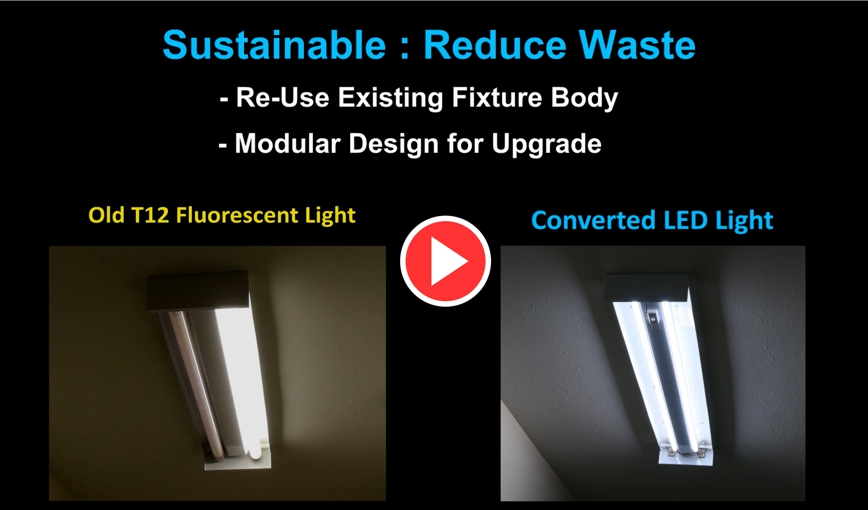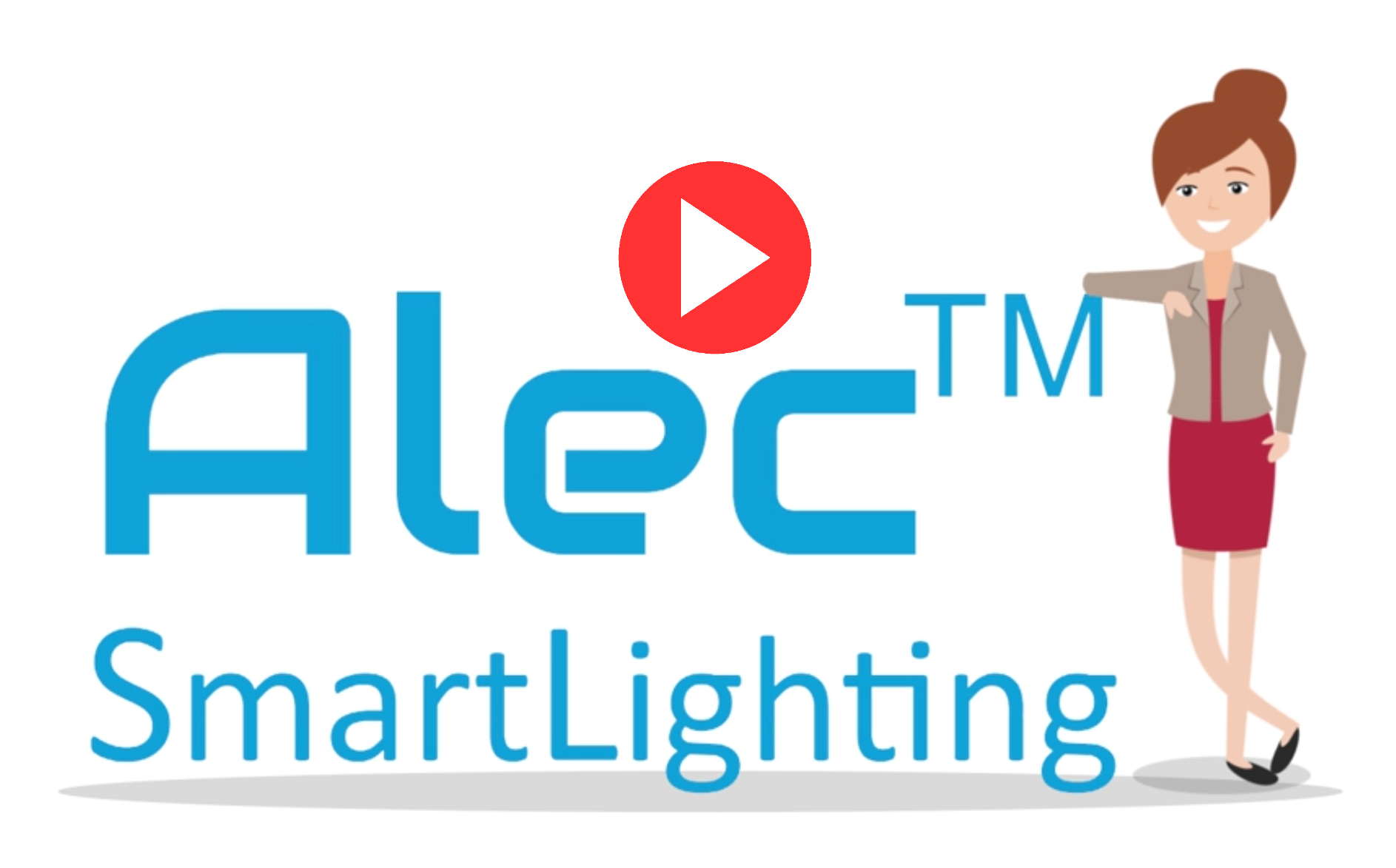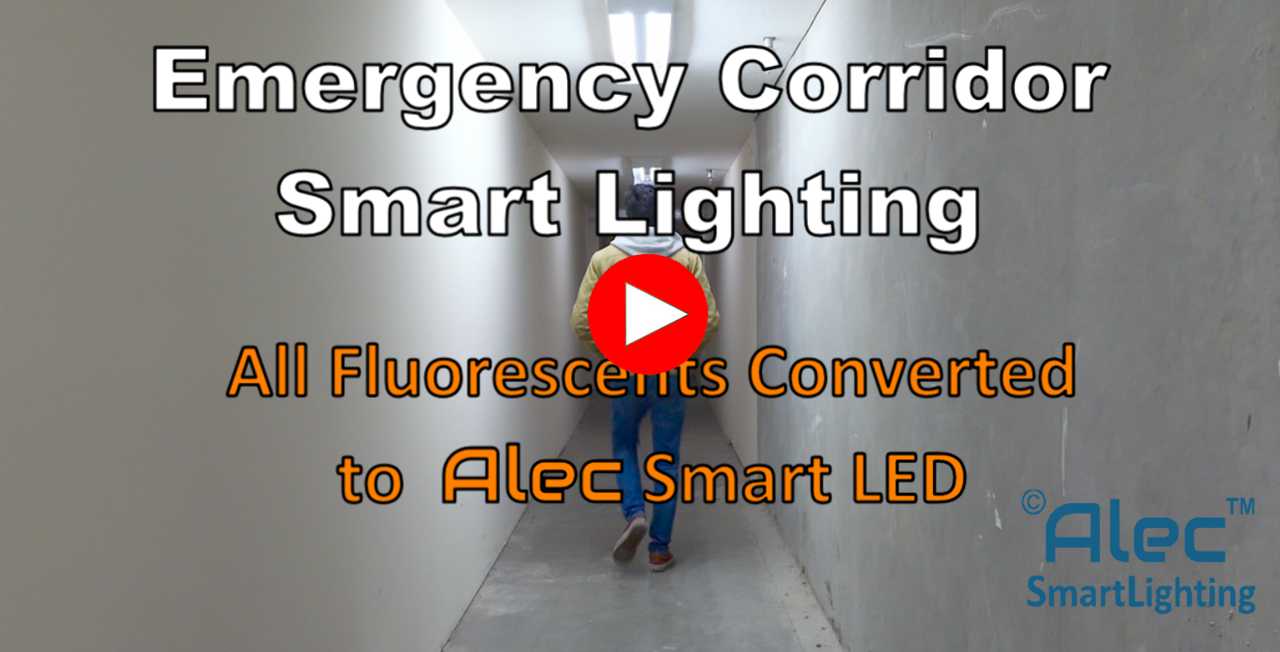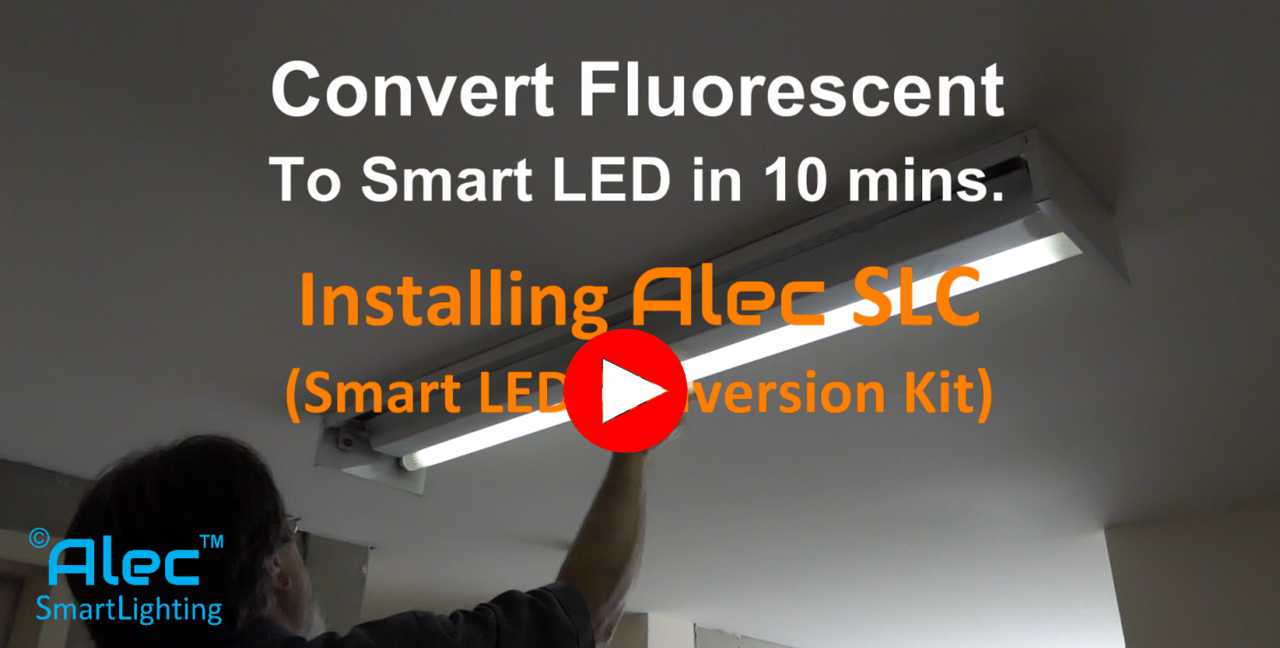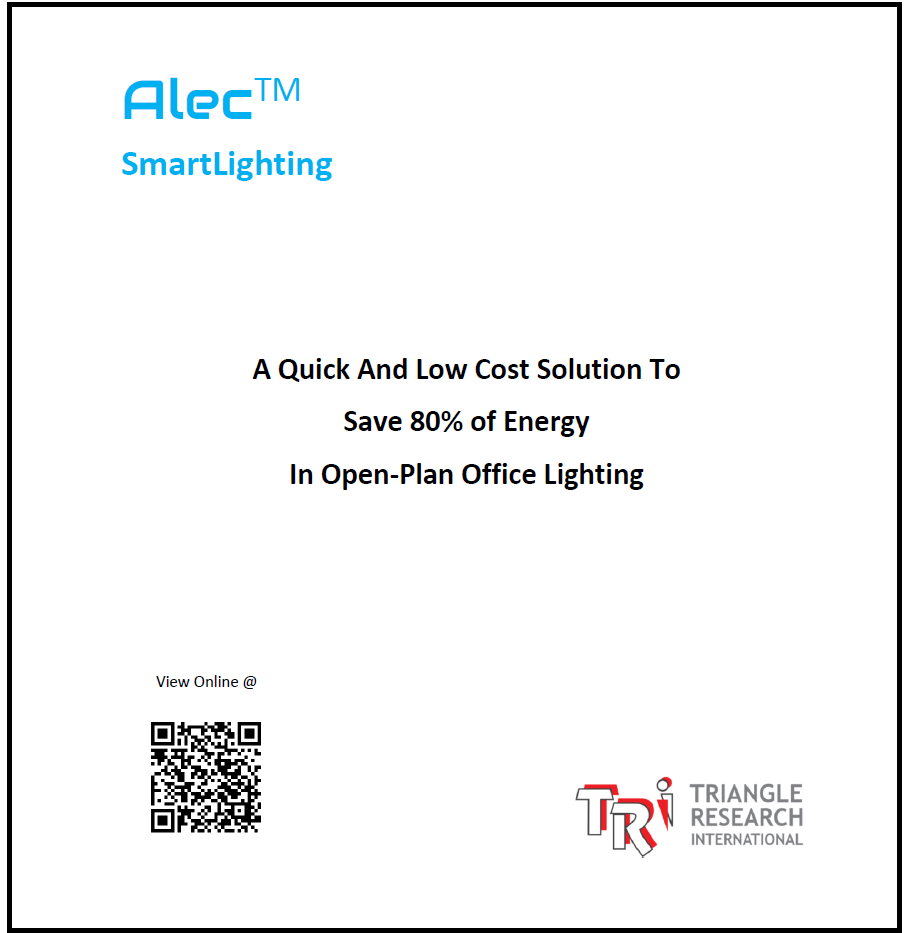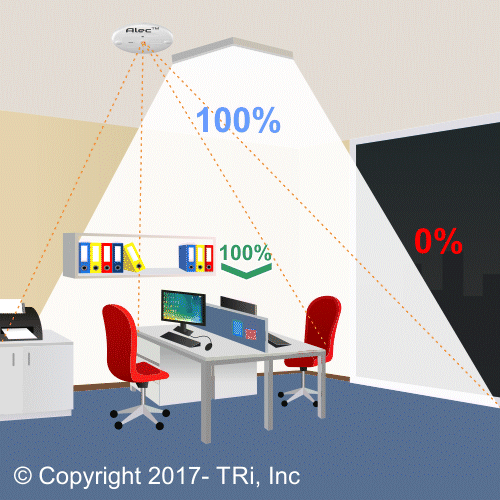Quick Links: Datasheets SLC Videos SLC-Open Office SLC-vs-TLED Warranty Other Videos
SLC (Smart LED Conversion Kit) Data Sheets
|
SLC For Open Office
It should be obvious that you can really save a staggering amount of energy by auto-dimming unused spaces, especially in areas that require 24/7 lighting, such as carparks, stairwells and any pathways used for emergency exit.
However, the largest amount of wasted lighting energy in commercial space is actually in lighting up the open-plan offices (aka “open offices”) which are common throughout the world. Unlike enclosed spaces where simple on/off occupancy-based lighting control may be a code-compliant, albeit non-ideal compromise, open offices present a big challenge to lighting control because the space is shared. However, with luminaire-level lighting control attainable only with ALEC SLC, you will now be able to instantly convert the fluorescent lights (commonly used in open office lighting) to Smart LED lights and save more than 80% energy, with no disruption to your existing operation. For more details, please click the white paper link next to find out why and how to save vast amounts of otherwise wasted energy in open-plan offices.
SLC vs LED Tubes
T-LED Advantages:
- Low upfront cost. Short payback period
- Quick installation if you already have the compatible ballast – simply remove the fluorescent tube and replace it with the T-LED of the same length.
T-LED Disadvantages:
- Lower efficiency. Actual energy savings are only about 21% for a single tube fixture to about 33% for a 4-tube fixture after taking into account the ballast losses. (For more info please read the energy calculations in this document )
- Non dimmable. You must size your wattage carefully to prevent overlighting or underlighting problems after the retrofit.
- Shortened lifespan due to heat trapped within the LED tubes cooking the electronic components all the time. Lifespan is also limited due to fully ON without possibility of dimming.
- Most T-LED are not compatible with magnetic ballast
- Most T-LED are not compatible with every kind of e-ballast technologies: e.g. Instant start, rapid start and programmed start. You most likely need to hire an electrician to open the ballast cover and examine if your ballast is compatible with the LED tubes that you have purchased.
- Require regular replacement of the electronic ballast in the fluorescent fixture which typically last only about 20,000 hours.
Comparison: Retrofitting a 2-tube 4 ft fluorescent fixture
Hours of operations: 24/7 = 8760 hours per year.
% of time space is occupied: 10% (e.g carpark, stairwell)
Two Retrofit options:
- Type A LED Tubes (ballast compatible): 2 x 17W per tube = 34W. Ballast power loss = 5W.
Total input power = 39W. - Alec SLC: Working brightness @50% = 20W. Vacancy brightness @10% = 4W.
Average input power for 10% space utilization = 4 x 0.9 + 20*0.1 = 5.6W
| Type A T-LED | Alec SLC | |
| Adjustable Working Brightness | No | Yes |
| Automatic Dimming when vacant | No | Yes |
| Automatic Dimming with Daylight | No | Yes |
| Ease of Installation | Yes, but only if the ballast is known to be compatible and the lamp holders are still in good conditions | Yes – totally bypass ballast and lamp holders |
| Installation time | < 10 minutes | < 10 minutes |
| Tube Lifespan | < 50,000 hours | 50,000-100,000 hours |
| Energy used per year | =0.039 x 8760 = 342kwh | 0.0056 x 8760 = 49kWh |
| 5-year Electricity Cost @$0.20/kWh |
= 342 x 0.20 x 5= $342 | = 49 x 0.20 x 5 = $49 |
| 5-year Additional SAVINGS @$0.20/kWh | = $342 – $342 = $0 | = $342 – $49 = $293 |
Observations
- Compared to 2 x T-LED, retrofitting a 2-tube fluorescent fixture using SLC will save you extra $293 in electricity after 5 years in operation (based on electricity rate @$0.20 / kWh).
- LED tubes are either dead or nearing the end of their useful life after 5 years in operations and will need to be replaced, whereas the SLC still have many more useful years ahead due to the fact that 90% of the time the LEDs are operating in dim mode.
Appendix
For more information about how SLC compares against T-LED with computation details and charts, please download this document:
